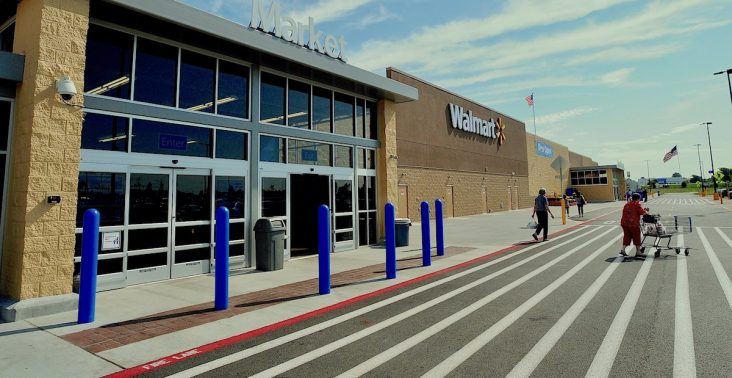Exec says Walmart Supercenters are an opportunity, not a drag
by March 28, 2019 6:14 pm 2,084 views

Brett Biggs, chief financial officer at Walmart, said the Supercenter is an omnichannel opportunity and no longer a disadvantage for the retail giant. Biggs, with Walmart for 19 years, said it was not long ago when Supercenters were viewed as excess retail in what was a trend to smaller stores.
Biggs spoke to a group of investors Thursday (March 28) at the Evercore ISI retail summit in Atlanta. He said Walmart’s massive store base is going to be a key part of the retailer’s omnichannel strategy.
“The amount of change in recent years has been huge,” Biggs said with regard to the company’s investments in omnichannel. “This is a sharp contrast to the Walmart of 15 years ago when the central focus was putting more Supercenters in the ground. … In retrospect, this made us slower than we would have liked to get to the omnichannel customer.”
Fast forward to 2016 and Bentonville-based Walmart began to see the benefit of online grocery pickup as something it could do at scale to bring convenience to shoppers and still leverage the retailer’s physical assets.
“We began to see the hard work of building 5,000 stores was already done, so we started investing in the technology capabilities of online pickup. The results have been huge because our customers love it,” he said.
Biggs said the Supercenter carries 120,000 items and can offer same-day pickup for consumers. He said 90% of the population is within 10 minutes of Walmart – a fulfillment infrastructure about as close to the end user as possible. Walmart has been able to leverage online grocery pickup to grow total e-commerce sales by a clip of roughly 35% this year. Online grocery pickup is responsible for a lion’s share of that growth, Biggs admitted.
By the end of 2019, Walmart will offer online grocery pickup in 3,000 stores which is a milestone because of the halo effect this provides to the company’s overall performance. Online grocery shoppers tend to spend nearly two times more than traditional store shoppers. Biggs said Walmart will continue to add more general merchandise to the online grocery app to grow the basket margins.
He said adding the additional inventory to online grocery pickup can be tricky, not from a space capacity basis but there are labor components and other metrics that reduce the efficiency of picking items like apparel. Biggs said in order to pick an apparel item the personal shopper has to ensure the right size and color is identical to what was ordered online. That takes more time than simply grabbing a box of Cheerios in the right size. He said adding other general merchandise like light bulbs is easier but that can also be more time and labor intensive because it requires the shopper to walk to the other side of the store.
He said users of online grocery will continue to see more general merchandise items pop up as the retailer works to add inventory that makes sense. Seasonal items have already been added and more is coming, he said.
Biggs said the massive size of the Supercenter also gives the retailer flexibility in the future as some categories do shift primarily to online. He said space has value and Walmart can use it to bring more services closer to the communities it serves. He said Walmart continues to experiment with healthcare service and growing its already large financial services unit.
Walmart also continues to lease store space to various types of service providers like a pet care veterinary clinic in Port Richey, Fla. Last year, Walmart announced a new outpatient mental health clinic opened inside a Walmart store in Carrollton, Texas. People can walk in, call or make an appointment online to see a licensed mental health professional about problems such as anxiety, depression, grief, relationship troubles or the stress of everyday living. Beacon Health Options, a Boston-based behavioral health services company, leases space in the store and runs the clinic.
Biggs said Walmart will move faster and invest more in technologies that help to enable efficiencies in omnichannel. He said as online grocery continues to grow that requires more labor. He said that labor has largely been shifted from the front-end and back-end of stores as technology is doing more of the work allowing employees to be in the middle of the store.
When asked if self-checkout had gone about as far as it could go at Walmart, Biggs said the retailer continually works to bring scan-and-go at scale. He said it works at Sam’s Club because the club has fewer items. He said at the Supercenter scale with more than 120,000 items it is harder to perfect.
“At some point, you will see something like that at Walmart,” Biggs said.
